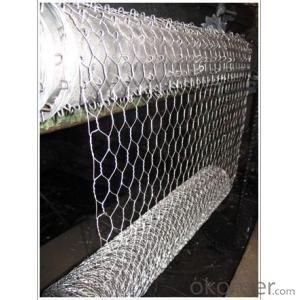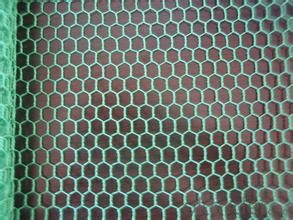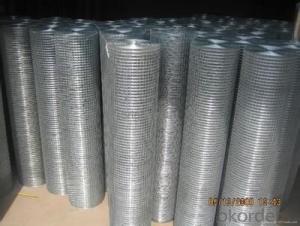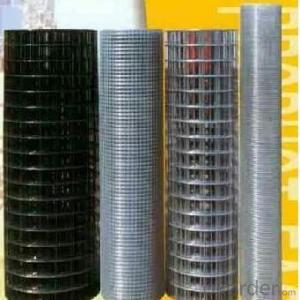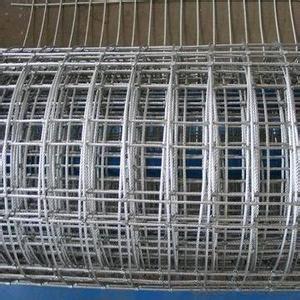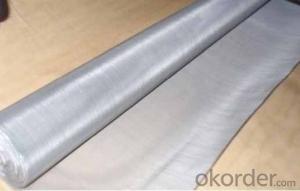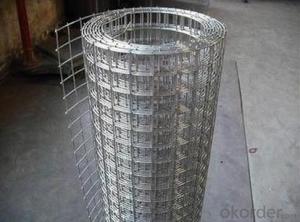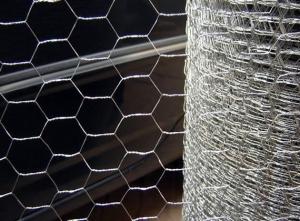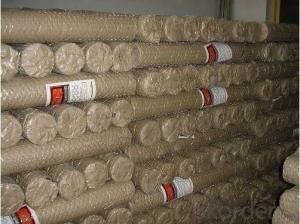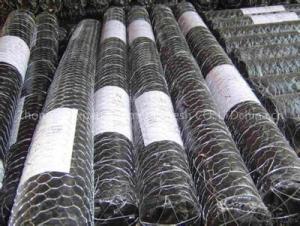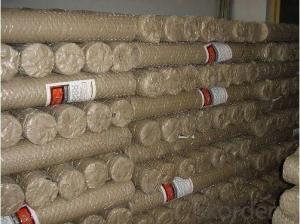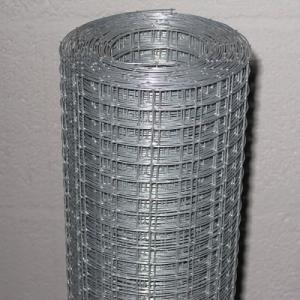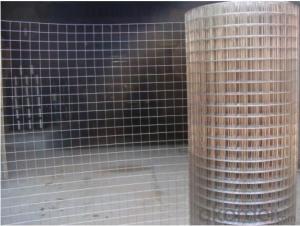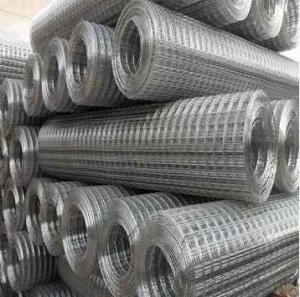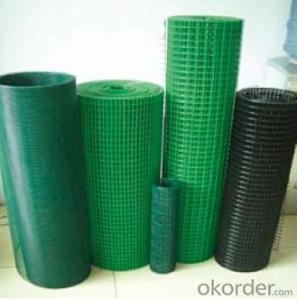Galvanized Hexagonal Wire Netting-3 inch
- Loading Port:
- China Main Port
- Payment Terms:
- TT or LC
- Min Order Qty:
- 50 roll
- Supply Capability:
- 5000 roll/month
OKorder Service Pledge
OKorder Financial Service
You Might Also Like
Introduction of Galvanized Hexagonal Wire Mesh
Galvanized Hexagonal Wire Mesh is made of by high quality galvanized wire, Low carton steel wire, stainless steel wire, iron wire, Galvanized steel wire.
Application of Galvanized Hexagonal Wire Mesh
Galvanized Hexagonal Wire Mesh is widely used in industrial and agricultural constructions, Rockwool, fence for poultry cage, fishing cage, playground fence and Christmas decorations
Surface treatment of Galvanized Hexagonal Wire Mesh
a. Black (mild steel wire)
b. Electro galvanized, (galvanized before welding, galvanized after welding)
c. Hot dip galvanized, (galvanized before welding, galvanized after welding)
d. Stainless Steel Wire
Advantage of Galvanized Hexagonal Wire Mesh
Our Galvanized Hexagonal Wire Mesh has strong corrosion-resisting and oxidation-resisting, stable shape, clean ends, good packing with good quality and rock bottom price.
Packing of Galvanized Hexagonal Wire Mesh
1. Waterproof paper then PVC shrinked
2. PVC shrinked only
3. Black waterproof paper only
4. Waterproof paper then metal/wooden pallet
5. Plastic film then carton
(Also as your request. )
Pictures of Galvanized Hexagonal Wire Mesh
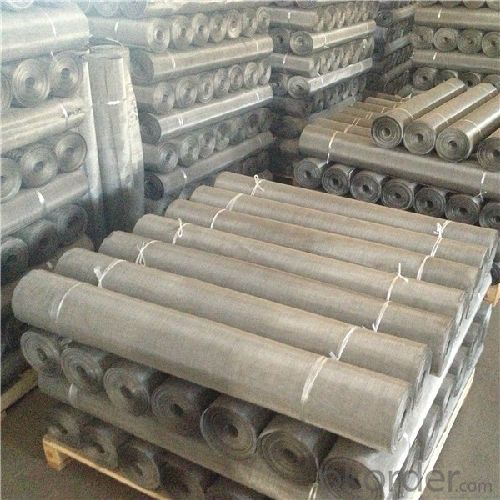
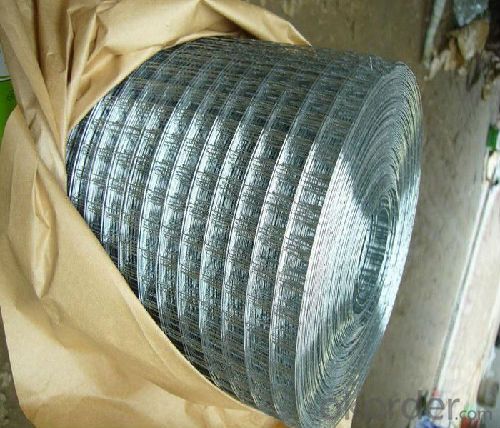
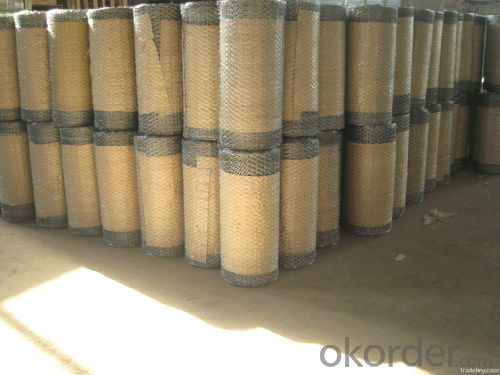
Specification of Galvanized Hexagonal Wire Mesh
Galvanized Hexagonal Wire Mesh-Normal Twist | ||||||||||||||||||||||||||||||||||||||||||||||||||||||||||||||||||||||||
| ||||||||||||||||||||||||||||||||||||||||||||||||||||||||||||||||||||||||
Galvanized Hexagonal Wire Mesh-Revise Twist | ||||||||||||||||||||||||||||||||||||||||||||||||||||||||||||||||||||||||
| ||||||||||||||||||||||||||||||||||||||||||||||||||||||||||||||||||||||||
FAQ
We have organized several common questions for our clients,may help you sincerely:
1. How about your company?
A world class manufacturer & supplier of welded wire mesh and is one of the large-scale professional investment Galvanized Hexagonal Wire Mesh bases in China. Annually more than 1000 containers of welded wire mesh are exported to markets in Europe, America and Japan.
2. What is the storage condition?
The Galvanized Hexagonal Wire Mesh should be stored at room temperature and kept from wet and heat source.
3. How to guarantee the quality of the products?
We have established the international advanced quality management system,every link from raw material to final product we have strict quality test;We resolutely put an end to unqualified products flowing into the market. At the same time, we will provide necessary follow-up service assurance.
4. How long can we receive the product after purchase?
In the purchase of product within four working days, we will arrange the factory delivery as soon as possible. The specific time of receiving is related to the state and position of customers. Commonly 7 to 10 working days can be served.
- Q: How does steel wire mesh perform in high-temperature insulation?
- Steel wire mesh performs well in high-temperature insulation applications due to its excellent thermal conductivity and resistance to heat. The mesh is typically made from stainless steel, which has a high melting point and can withstand extreme temperatures without losing its structural integrity. When used in high-temperature insulation, the steel wire mesh acts as a barrier, preventing heat transfer and reducing thermal conductivity. It effectively traps air or other insulating materials in its mesh structure, creating a layer of insulation that helps to maintain a stable temperature. Additionally, the mesh's durability and strength make it capable of withstanding the high temperatures found in industrial settings, such as furnaces, boilers, and kilns. It can resist thermal expansion and contraction, maintaining its shape and effectiveness over time. Steel wire mesh also provides other benefits in high-temperature insulation applications. Its flexibility allows it to conform to various shapes and surfaces, making it easy to install and apply in different areas. It is also resistant to corrosion and can withstand exposure to chemicals and corrosive substances, ensuring its longevity and effectiveness. Overall, steel wire mesh is a reliable and efficient material for high-temperature insulation, offering excellent thermal conductivity, durability, and resistance to heat. Its performance in these applications makes it a preferred choice for industries that require reliable insulation at elevated temperatures.
- Q: Can steel wire mesh be used for creating mesh screens?
- Yes, steel wire mesh can be used for creating mesh screens. Steel wire mesh is a durable and strong material that can effectively serve as a barrier or filter in various applications, including creating mesh screens. It provides excellent structural support and can withstand high temperatures and harsh conditions, making it suitable for use in mesh screens for different industries such as construction, agriculture, and mining.
- Q: What are the different tensioning methods for steel wire mesh?
- There are several different tensioning methods for steel wire mesh, each with its own advantages and considerations. 1. Hand tensioning: This is the most basic method, where the mesh is manually pulled and stretched to achieve the desired tension. It is suitable for smaller areas and applications where precision is not critical. Hand tensioning is relatively simple and cost-effective, but it may not provide uniform tension across the entire mesh. 2. Ratchet tensioning: This method uses ratchets and straps to apply tension to the wire mesh. It allows for more controlled and consistent tensioning, ensuring uniformity throughout the mesh. Ratchet tensioning is often used for larger areas and applications where precise tension is required, such as sports fields or fences. 3. Mechanical tensioning: Mechanical tensioning systems utilize specialized tools or machines to exert force and stretch the wire mesh. These systems offer high tensioning accuracy and efficiency, making them suitable for large-scale projects or applications that demand precise tension control. Mechanical tensioning methods include hydraulic or pneumatic systems, which can provide significant force to stretch the mesh effectively. 4. Pre-tensioning: Pre-tensioning is a method where the wire mesh is stretched and tensioned before being installed in its final position. This approach is commonly used in precast concrete applications, where the mesh is embedded in the concrete to provide reinforcement. Pre-tensioning ensures the mesh remains taut during the concrete pouring process, resulting in a stronger and more structurally sound finished product. 5. Post-tensioning: Post-tensioning is a technique used to increase the tension in wire mesh after it has been installed. This method involves applying force to the mesh using specialized equipment, such as hydraulic jacks or tensioning bars. Post-tensioning is commonly used in applications like concrete slabs or bridge construction, where additional strength and stability are required. It's important to consider the specific requirements of your project and consult with professionals to determine the most suitable tensioning method for your steel wire mesh. Factors such as the size of the area, desired tension levels, and the application's structural demands will influence the choice of tensioning method.
- Q: Can steel wire mesh be used for ventilation or airflow control?
- Yes, steel wire mesh can be used for ventilation or airflow control in certain applications. Steel wire mesh is commonly used in HVAC systems, industrial settings, and even in home ventilation systems. It allows air to pass through while preventing the entry of larger particles or insects, making it ideal for controlling airflow and providing ventilation. Additionally, steel wire mesh is durable and can withstand high temperatures, making it suitable for use in environments where heat is a concern. However, it is important to consider the specific requirements of the application and ensure that the mesh size and design are appropriate for the desired airflow control.
- Q: Can steel wire mesh be used for creating gabion mattresses?
- Yes, steel wire mesh can be used for creating gabion mattresses. Gabion mattresses are a type of erosion control structure that is used to prevent soil erosion and stabilize slopes. They are constructed by filling steel wire mesh baskets with rocks or other suitable materials. The mesh acts as a containment system, holding the rocks in place while allowing water to flow through. Steel wire mesh is a commonly used material for creating gabion mattresses due to its strength, durability, and ability to withstand harsh environmental conditions. It provides a stable framework for the rocks and ensures the longevity and effectiveness of the gabion mattress in erosion control applications.
- Q: How is steel wire mesh used in reinforcement of high-rise buildings?
- Steel wire mesh is commonly used in the reinforcement of high-rise buildings as it provides structural support and increases the overall strength and stability of the building. The wire mesh is typically placed in concrete structures, such as walls, columns, and slabs, during the construction process. One of the main functions of steel wire mesh is to distribute the load evenly across the concrete structure, thereby reducing the risk of cracks and other structural failures. The mesh acts as a reinforcement, helping to resist the tensile forces that can occur in high-rise buildings due to factors like wind, seismic activity, and the weight of the structure itself. In addition to its load-bearing capabilities, steel wire mesh also enhances the durability and longevity of the building. By preventing the formation and propagation of cracks, the mesh helps protect the concrete from moisture penetration, corrosion, and other damaging elements. This is especially crucial in high-rise buildings, where the exposure to external forces and environmental conditions is higher. Moreover, steel wire mesh is easy to handle and install, making it a cost-effective solution for reinforcing high-rise buildings. The mesh is typically manufactured in large rolls or sheets, which can be easily cut and shaped to fit the required dimensions. This allows for a quick and efficient installation process, saving both time and labor costs during construction. Overall, steel wire mesh plays a crucial role in the reinforcement of high-rise buildings by providing structural support, distributing loads, preventing cracks, and enhancing durability. Its use in construction ensures the safety and longevity of these tall structures, making them more resistant to various forces and increasing their overall structural integrity.
- Q: What are the different welding methods used for steel wire mesh?
- There are several different welding methods used for steel wire mesh, each offering its own advantages and suitability for specific applications. Some of the commonly used welding methods for steel wire mesh include: 1. Resistance Spot Welding: This method uses electric current to create heat and pressure to join the wires at specific points. It is a fast and efficient welding technique suitable for high-volume production of steel wire mesh. 2. Gas Metal Arc Welding (GMAW): Also known as MIG (Metal Inert Gas) welding, GMAW uses a consumable wire electrode and a shielding gas to protect the weld from atmospheric contamination. It provides good control over the welding process and is commonly used for welding thinner wire mesh. 3. Gas Tungsten Arc Welding (GTAW): Also referred to as TIG (Tungsten Inert Gas) welding, GTAW uses a non-consumable tungsten electrode and a shielding gas to create the weld. It offers precise control, high-quality welds, and is often used for welding stainless steel wire mesh. 4. Flux-Cored Arc Welding (FCAW): This method uses a tubular wire electrode filled with flux, eliminating the need for a shielding gas. FCAW is popular for outdoor applications or in environments with wind because the flux protects the weld from atmospheric contamination. 5. Laser Welding: Laser welding uses a high-powered laser beam to melt and join the wires together. It provides high precision and can be used for welding very fine wire mesh, but it is typically more expensive than other methods. The choice of welding method for steel wire mesh depends on factors such as the wire diameter, the required strength of the weld, the production volume, and the specific application. Each method has its own advantages and limitations, and it is important to consider these factors carefully to ensure the best welding method is chosen for steel wire mesh fabrication.
- Q: Can steel wire mesh be used for filtration purposes?
- Yes, steel wire mesh can be used for filtration purposes. It is commonly used in various industries, such as mining, agriculture, and water treatment, to filter out solids and impurities from liquids or gases. The mesh size and wire diameter can be adjusted to meet specific filtration requirements, making it a versatile and effective filtration medium.
- Q: How is steel wire mesh used in reinforcement of embankments?
- Steel wire mesh is a commonly used material for reinforcing embankments, which helps to provide stability and prevent erosion. This mesh is typically placed within the embankment structure to distribute the load and improve its overall strength. When constructing embankments, such as those found in roadways, railways, or retaining walls, it is often necessary to incorporate steel wire mesh as a reinforcement measure. This mesh consists of interlocking strands of steel wire, forming a grid-like pattern. This grid acts as a layer of reinforcement, enhancing the embankment's resistance to external forces, such as the weight of the soil, water pressure, or ground movements. The primary function of steel wire mesh in embankment reinforcement is to evenly distribute the load across the structure. By providing a continuous network of interconnected wires, the mesh helps transfer the load from the surface to the underlying layers, reducing the risk of localized failures or deformations. This is particularly important in areas with weak or unstable soils, where the mesh can stabilize the embankment and prevent settlement or collapse. Furthermore, steel wire mesh serves as a barrier against erosion. It retains the soil particles within the embankment, preventing them from being washed away by water or wind. This is especially crucial in embankments near rivers, streams, or coastal areas, where erosion is more likely to occur. The use of steel wire mesh in embankment reinforcement offers several advantages. It is a cost-effective solution compared to alternatives like concrete or geosynthetic materials. Moreover, steel wire mesh is relatively easy to install and can be customized to fit the specific requirements of the embankment project. Additionally, its durability and corrosion resistance ensure a long lifespan, providing long-term stability and protection to the embankment structure. In conclusion, steel wire mesh plays a significant role in reinforcing embankments, enhancing their strength, stability, and resistance to external forces while also preventing erosion. Due to its cost-effectiveness, ease of installation, and durability, it remains a preferred choice for many embankment construction projects.
- Q: What are the different load distribution capabilities of steel wire mesh?
- Steel wire mesh has various load distribution capabilities depending on its design and application. Firstly, steel wire mesh can distribute loads evenly across its surface area. This is especially beneficial in applications where there is a need to distribute heavy loads, such as in construction projects or industrial settings. The interconnected network of wires in the mesh helps to evenly distribute the weight, preventing localized points of stress and ensuring a more balanced distribution of the load. Secondly, steel wire mesh can also provide load carrying capabilities in tension and compression. The tensile strength of steel wire allows it to withstand high amounts of tension, making it suitable for applications where there is a need to support or carry loads in a suspended manner. Additionally, the compressive strength of steel wire mesh allows it to bear loads from above, making it useful for flooring or decking applications. Furthermore, steel wire mesh can offer load distribution capabilities in terms of impact resistance. The resilience and durability of steel wire make it resistant to impact, reducing the risk of damage or deformation when subjected to heavy loads or external forces. This property is particularly advantageous in high-traffic areas or installations exposed to potential impacts, such as fencing or safety barriers. Lastly, steel wire mesh can provide load distribution capabilities in terms of heat dissipation. The open and porous nature of the mesh allows for efficient airflow, facilitating heat dissipation and preventing the accumulation of thermal energy. This makes steel wire mesh suitable for applications where heat management is important, such as in HVAC systems or industrial processes. In conclusion, the different load distribution capabilities of steel wire mesh include its ability to evenly distribute loads, carry loads in tension and compression, resist impacts, and dissipate heat. These properties make steel wire mesh a versatile and reliable material for a wide range of applications, ensuring structural integrity and safety in various environments.
Send your message to us
Galvanized Hexagonal Wire Netting-3 inch
- Loading Port:
- China Main Port
- Payment Terms:
- TT or LC
- Min Order Qty:
- 50 roll
- Supply Capability:
- 5000 roll/month
OKorder Service Pledge
OKorder Financial Service
Similar products
Hot products
Hot Searches
Related keywords
